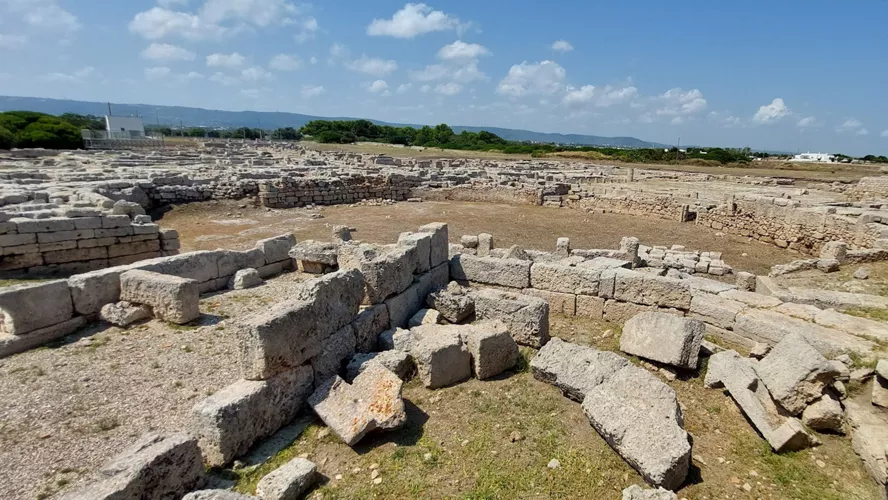This content was automatically translated. View the original text.

Overview
Giuseppe Andreassi National Archaeological Museum, where the past puts on a show
Puglia is a land of magnificent landscapes and good food, but also culture and history: if you want to step back in time, one of the most important archaeological sites is located near Fasano.
The Giuseppe Andreassi National Archaeological Museum where here you can see valuable artefacts from the Bronze Age to the Middle Ages close-up.
A journey spanning 30 centuries, passing through ancient Egnatia.
A project to keep memory alive
The Egnatia Archaeological Museum is part of the Egnatia Park and is surrounded by the excavated remains of the ancient city.
It is an exhibition of considerable importance, named after Giuseppe Andreassi, superintendent and director of the facility for several years.
The artefacts unearthed in 1912 did not find a safe home until the 1970s, when it was decided to exhibit them to the public. Today, the exhibition stands in the area of the Messapian necropolis and tells the story of the urbanisation of the city, starting from the 16th century BC.
It runs through seven sections that also cover the surrounding areas, from Monopoli to Torre Santa Sabina to Mesagne and Cavallino.
The exhibition route
Inside, the Messapian, Roman, Late Antique and Medieval eras are showcased.
The structure, located not far from the modern town of Egnatia, a hamlet of Fasano, comprises 10 rooms that tell of its strategic position and how it became an important commercial port of call between the West and the East, so much so that the Romans did not fail to make their presence felt in the area from the 3rd century BC.
It starts from the prehistoric huts of Egnatia and arrives at the medieval bishop's seat.
In the last part, evidence of the Longobard presence is displayed.
From yesterday to today: what to see
From the Messapian phase of Egnatia, one can still see the defence walls and the necropolis with pit, half-chamber and chamber tombs.
The remains of the Roman city include the Via Traiana, the Civil Basilica with the Hall of the Three Graces, the Sacellum of the Oriental Gods, the porticoed square, the cryptoporticus and baths.
And then there are the buildings of Christian worship, built between the fourth and sixth centuries AD. The Episcopal Basilica with the baptistery and the Southern Basilica, once with mosaic floors are a must-see.
The Museum and Exhibitions
The museum was built in 1975 and has hosted various temporary exhibitions since 1981, with a permanent exhibition entitled Egnatia, History and Monuments.
Among the exhibits on display is a rich collection of ceramics. Valuable in this respect is a marble head from the Roman period depicting the god Attis, the altar destined for sacrifices in honour of oriental deities and the mosaic of the Three Graces.
Via degli Scavi, 87, 72010 Savelletri BR, Italia